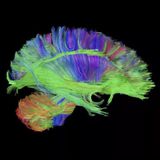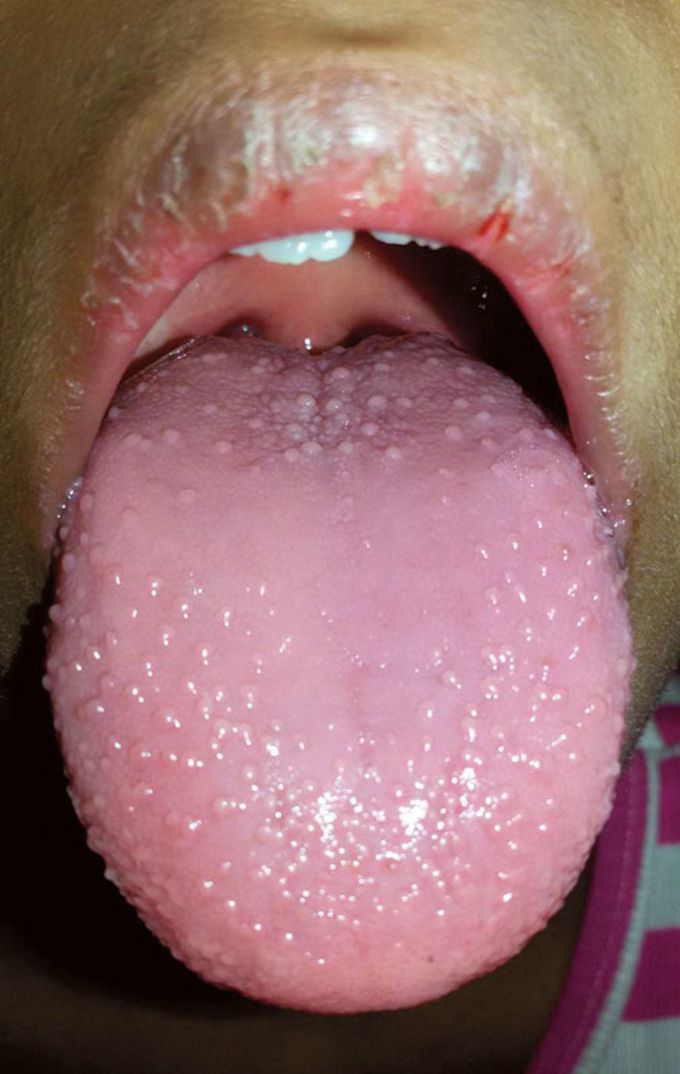

An 8-year-old girl was admitted to the hospital with 7-day history of fever and rash. She had a diffuse macular rash, fissured lips, and strawberry tongue, and her temperature was 39°C. She had nonexudative conjunctival injection in both eyes, a few enlarged cervical lymph nodes, erythema of the palms and soles, mild edema of the hands, and periungual desquamation. The cardiac examination was normal. A clinical diagnosis of Kawasaki’s disease was made. Laboratory investigation revealed leukocytosis, with a white-cell count of 13,000 per cubic millimeter (reference range, 3500–10,500) and an elevated erythrocyte sedimentation rate of 80 mm per hour (reference range, 0 to 29). The platelet count and results on electrocardiography and echocardiography were normal. She was treated with aspirin and immune globulin on admission and at a follow-up visit 8 weeks later. Kawasaki’s disease is a vasculitis of childhood. It occurs most frequently in children younger than 5 years of age and typically affects medium-sized arteries. Accurate diagnosis and early therapeutic interventions can decrease the risk of coronary-artery abnormalities. There is no diagnostic test that is specific for Kawasaki’s disease; diagnosis is based on characteristic clinical findings and the exclusion of other possibilities in the differential diagnosis, including other infectious exanthems of childhood and reactions to drugs.source: nejm.org
